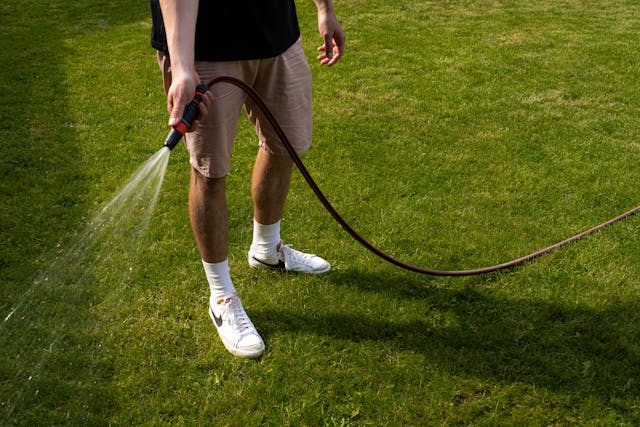A thick, green lawn is not just a sign of pride for homeowners; it’s also an oasis of outdoor living space. Overseeding is one of the most effective methods to enhance the density and appearance of your lawn. However, the success of overseeding significantly depends on how well the lawn is watered afterwards. In this post, we will guide you through the best practices for watering your lawn after overseeding, ensuring your grass grows healthy and strong.
What is Overseeding?
Overseeding is the process of planting new grass seed directly into existing turf, without tearing up the turf or the soil. It’s an excellent way to improve the density of thin lawns, cover up bare spots, and enhance the lawn’s color and texture. The best time for overseeding is usually during the fall when the temperatures are moderate and there’s plenty of moisture.
The Importance of Watering After Overseeding
Water is a critical element in the germination of new seeds. Without adequate moisture, seeds remain dormant and fail to germinate. Proper watering ensures that seeds have the necessary moisture to sprout and establish a robust root system. It’s not just about quantity but also about consistency and timing.
Watering Best Practices
- Initial Watering: Start watering immediately after overseeding to help seeds make contact with the soil and begin the germination process. Initially, keep the top inch of soil consistently moist but not waterlogged.
- Frequency and Timing: Water your lawn lightly but frequently, typically two to three times per day, ensuring that the soil does not dry out until seeds have fully germinated. The best times to water are early morning and late afternoon to avoid high evaporation rates.
- Amount of Water: Gradually reduce the frequency of watering as the seeds start to germinate and seedlings establish themselves. Transition to deeper, less frequent watering to encourage deeper root growth.
- Even Distribution: Use a sprinkler system that provides uniform water coverage to ensure all parts of your lawn receive equal moisture, which is essential for uniform grass growth.
Common Mistakes to Avoid
- Overwatering: While maintaining moist soil is key, too much water can lead to fungal diseases and seed rot.
- Underwatering: Allowing the soil to dry out can cause the seedlings to die before they fully establish.
- Irregular Watering: Inconsistent watering can lead to uneven germination and growth, resulting in a patchy lawn.
Long-term Lawn Care and Maintenance
After the seeds have established, begin transitioning to a regular watering schedule. This usually involves watering deeply and less frequently, which encourages the roots to grow deeper into the soil, making your lawn more drought-resistant and healthier in the long run. Remember to continue regular lawn maintenance practices such as mowing at the correct height and applying appropriate fertilizers.
Watering your lawn correctly after overseeding is crucial for ensuring the successful establishment of new grass. By following these best practices, you can expect to see a vibrant, revitalized lawn that not only looks great but is also healthier and more resilient.
Need more tips or help with your lawn care?
Contact GreenStripe today to get expert advice or to schedule a consultation. Let us help you achieve the perfect lawn that you’ve always desired.



